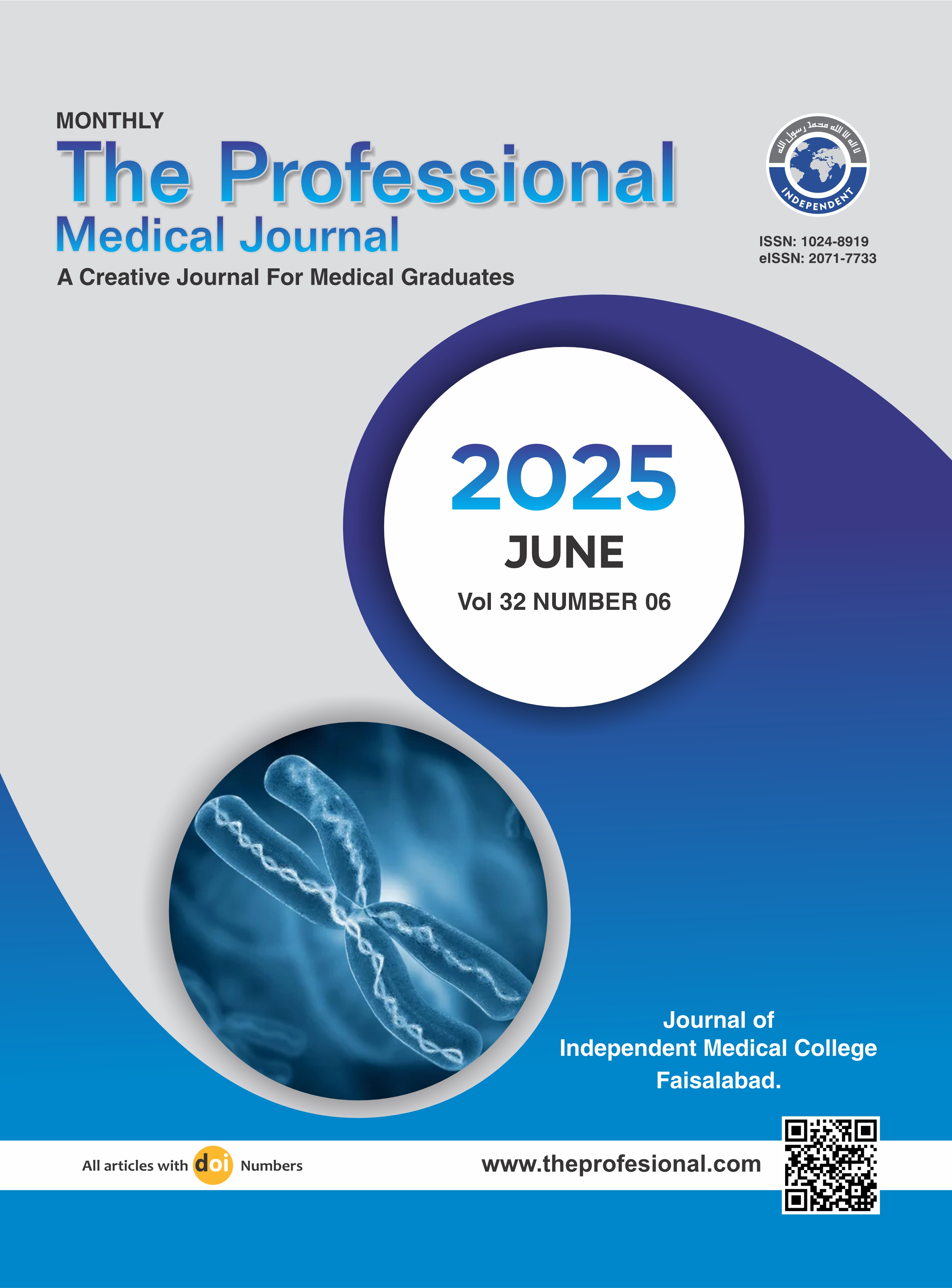Frequency of in-Hospital complications in patients with acute inferior wall myocardial infarction with and without thrombolysis.
DOI:
https://doi.org/10.29309/TPMJ/2025.32.06.9325Keywords:
Acute Inferior Wall Myocardial Infarction, In-hospital Complications, ThrombolysisAbstract
Objective: To compare the frequency of in-hospital complications in patients with acute inferior wall myocardial infarction with and without thrombolysis. Study Design: Descriptive study. Setting: Department of Cardiology, Rehmatul-Lil-Alameen Post Graduate Institute of Cardiology, Lahore. Period: 1st August 2024 to 31st January 2025. Methods: A total of 100 patients, aged between 35 and 65 years, either gender, presenting with acute inferior wall myocardial infarction (IWMI), were enrolled in the study from the emergency department. Those patients presenting within 12 hours of symptom onset received thrombolytic therapy, while those presenting after 12 hours did not receive thrombolysis. The patients were admitted to cardiology wards and observed for five days. During indoor follow-up, they were examined for complications such as congestive heart failure, cardiogenic shock, stroke, atrial fibrillation, and mortality. Results: The average age was found to be 51.28±7.86 years. The most frequent comorbidity was anemia in 61 patients (61%), followed by smoking in 56 patients (56.0%), and dyslipidemia in 54 patients (54.0%). Diabetes affected 52 patients (52%); on the other hand, 48 patients (48%) were hypertensive. Family history of IHD was recorded in 50 patients (50.0%). The incidence of in-hospital complications was highly significant and differed between thrombolysis and non-thrombolysis patients. More cases of congestive heart failure were found among the non-thrombolysis patients, who were 24 (72.7%) as compared to 9 (27.3%) in the thrombolysis group (p<0.001). Similarly, cardiogenic shock was observed in 18 (72.0%) non-recipients and 7 (28.0%) recipients (p<0.001). Non-recipients had much higher rates of AV blocks at 36 (75.0%) compared to 12 (25.0%) among those receiving thrombolysis (p<0.001). Patients who were not treated with thrombolysis more often suffered from mitral regurgitation: 35 (67.3%) vs 17 (32.7%) among thrombolysis patients, p<0.001. The right ventricle failure was also associated with a majority of the non-recipients 34 (77.3%) compared to thrombolysis recipients where this occurrence was only present in 10 (22.7%), p < 0.001. No difference was reported concerning stroke between both groups 1 (50.0%) vs. 1 (50.0%), p = 0.794. Atrial fibrillation was more frequent in non-thrombolysis patients 28 (66.7%) vs. 14 (33.3%), p<0.001. Conclusion: In conclusion, the results show that of the patients with acute inferior wall myocardial infarction, the majority, 59%, underwent thrombolysis, which is thus very frequently used in the treatment of this kind of patient. Our findings suggest that in-hospital complication rate was significantly reduced in patients who underwent thrombolytic therapy as compared to the ones who did not receive thrombolysis.
Downloads
Published
Issue
Section
License
Copyright (c) 2025 The Professional Medical Journal

This work is licensed under a Creative Commons Attribution-NonCommercial 4.0 International License.


